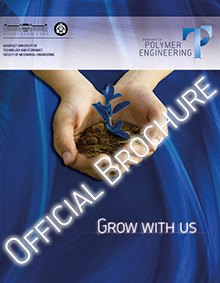Investigation of the mechanical recyclability of packaging plastic waste and microplastics
Project summary
Nowadays, environmentally conscious manufacturers, in addition to producing their products from partially or completely recycled raw materials, are increasingly using biopolymers instead of or in addition to petroleum-based plastics. In 2021, only the total plastic production will be approx. 8.3% was post-consumer recycled plastic, and approx. 1.5% were biopolymers, but their amount is increasing every year. Petroleum and biobased polymers are also mostly used to make packaging materials, which, due to their function, have a very short lifespan (up to a few days), which means they become waste in a short time. The recycling of petroleum-based polymers already works well, and the organic recycling of biodegradable polymers is already possible, but the population and selective waste collection are not yet prepared for the separate collection of biopolymers. Therefore it may be mixed with petroleum-based polymer waste during recycling. Biodegradable plastics should be collected separately and recycled, the reason being that if they are mixed with petroleum-based plastics in the waste stream, they negatively affect the properties of the secondary (recycled) raw material. The main question of the research is what kind of contaminant content causes a significant deterioration in the quality of the recycled material, which already hinders the industrial applicability of the polymer blend. Nowadays, more and more publications and news appear about microplastics. In most cases, they are only detected in the environment, but their recyclability is not investigated. In the research, I would recycle the microplastics together with the driftwood as a composite material.
Project results
Project-related publications
- Krizsma Sz. G., Suplicz A., Gere D.: Customised production of injection moulded parts from recycled materials using rapid tooling approach and coupled injection moulding-thermal and mechanical simulation. Results in Engineering, 26, 105272/1-105272/15 (2025) https://doi.org/10.1016/j.rineng.2025.105272 IF=6 D1
- Ronkay F., Gere D., Slezák E., Szabó E., Marosi Gy., Bocz K.: Recycled PET packaging materials of improved toughness— Importance of devitrification of the rigid amorphous fraction. Macromolecular Materials and Engineering, 310, 2400219/1-2400219/9 (2025) 10.1002/mame.202400219 IF=4.2 Q2
- Ronkay F., Slezák E., Gere D., Lukács N., Gyalai-Korpos M., Molnár A. D., Bocz K.: Thermoanalytical approach to assess riverine PET litter and its recycling potential. Scientific Reports, 15, 15673/1-15673/12 (2025) 10.1038/s41598-025-94925-y IF=3.8 Q1
- Gere D., Pomázi F., Szöllősi A., Jahanpeyma P., Ermilov A. A., Baranya S., Toldy A.: Mikroműanyag szennyezés vizsgálata a Duna budapesti szakaszán. Polimerek, 2, 66-72 (2024)
- Dremák Cs., Gere D., Czigány T.: Farost-erősítésű kompozit előállítása szelektíven gyűjtött poliolefin kupakból és fa hulladékból. in 'OGÉT 2024 - XXXII. Nemzetközi Gépészeti Konferencia Csíksomlyó, Románia. 2024.04.25-2024.04.28.,88-93 (2024)






